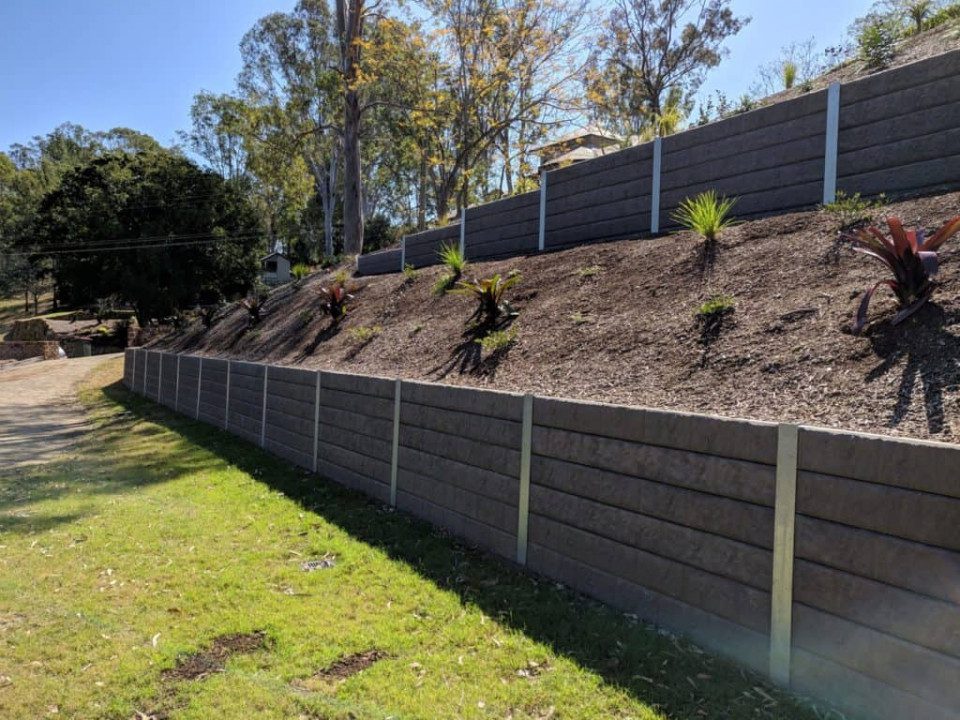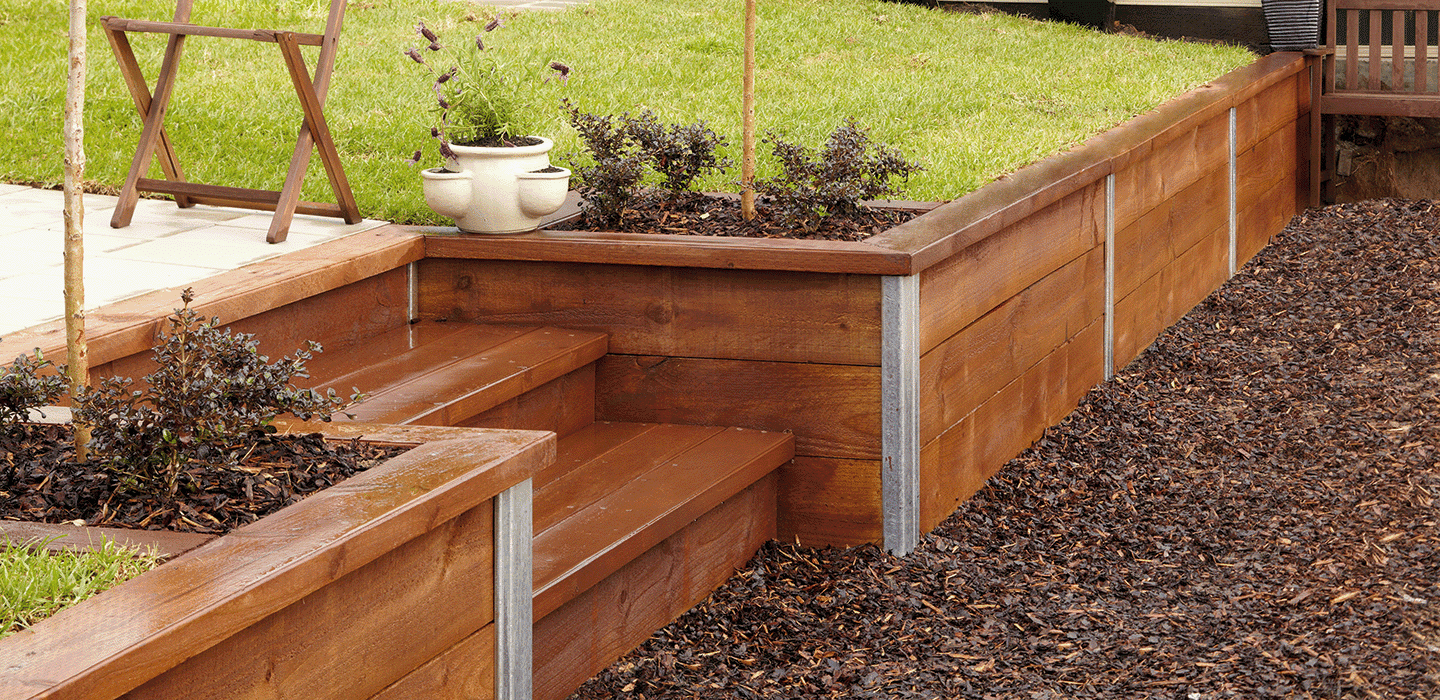Leading Benefits of Professional Retaining Walls Sunshine Coast for Your Residential property
Leading Benefits of Professional Retaining Walls Sunshine Coast for Your Residential property
Blog Article
Enhancing Residential Or Commercial Property Security: The Role of Retaining Walls in Soil Retention and Disintegration Control
Retaining wall surfaces stand as silent guardians, playing an essential function in dirt retention and disintegration control. By discovering the subtleties of various types, layout considerations, building techniques, and maintenance pointers associated with retaining walls, a deeper understanding of their crucial role in improving residential or commercial property security emerges.
Relevance of Retaining Walls in Security
Maintaining walls play a crucial duty in holding back soil, stopping disintegration, and producing level surfaces in sloped areas. By offering architectural support, keeping walls help to rearrange lateral pressure created by soil, preventing landslides and slippage.
Keeping walls are especially vital in hilly or uneven surfaces where dirt erosion is a common occurrence. Without adequate support, dirt disintegration can lead to the degradation of landscapes, endangering the honesty of structures and posing risks to inhabitants. Preserving wall surfaces work as obstacles, maintaining the dirt and stopping it from moving downhill during heavy rains or various other environmental stress factors.
Moreover, keeping wall surfaces use lasting advantages by reducing upkeep costs related to soil disintegration and land instability. By spending in properly designed preserving wall surfaces, residential property owners can make sure the longevity and sustainability of their landscapes while promoting a visually enticing and risk-free atmosphere.

Kinds of Retaining Walls for Disintegration Control
Generally utilized in landscaping and civil engineering projects, various kinds of keeping wall surfaces work as reliable remedies for erosion control in varied terrain conditions. Gravity maintaining walls are sturdy structures that rely upon their weight to stand up to the pressure of the dirt behind them. They are suitable for reduced to tool height applications and are normally made of concrete or rock. Cantilever keeping walls, on the various other hand, are made with a thicker base and use a bar arm to withstand the soil stress. These wall surfaces are frequently utilized in locations where area is restricted.
For taller walls or where room is a restraint, anchored retaining wall surfaces are commonly used. These walls utilize wires or strips that are secured right into the soil or rock behind the wall surface to give added support. An additional type, the sheet heap maintaining wall surface, is optimal for locations with soft dirt. Retaining Walls Sunshine Coast. These wall surfaces include interlocking sheets that are driven into the ground to develop an obstacle against soil disintegration. When selecting the appropriate sort of preserving wall for erosion control, elements such as soil composition, wall height, and website conditions have to be thoroughly taken into consideration to guarantee resilient stability and performance.
Layout Considerations for Soil Retention
Incorporating the principles of architectural design and environmental sustainability is necessary when considering layout aspects for efficient soil retention remedies. When creating for dirt retention, it is vital to examine the certain demands of the site, consisting of soil structure, water drainage patterns, and incline stability. The elevation and location of the retaining wall surface are vital factors that influence the general layout. Designers should additionally consider the pressure exerted by the kept soil and possible side loads to try these out guarantee the framework's stability over time.
Moreover, the product option for the keeping wall surface is important in boosting longevity and performance. Concrete, wood, gabion baskets, and all-natural stone are usual products used in maintaining wall building, each with its one-of-a-kind advantages and considerations. Appropriate water drainage systems, such as weep holes and French drains, ought to be integrated right into the style to protect against water build-up behind the wall, which can cause architectural failing and disintegration.
Construction Strategies for Maintaining Walls
When carrying out style considerations for efficient soil retention, the building and construction strategies for maintaining wall surfaces play an essential function in making sure structural stability and lasting security. One typical method is the gravity wall surface, which relies on the weight and mass of the wall itself to resist the pressure of the retained soil.
Another extensively utilized construction strategy is the cantilevered wall, which utilizes a concrete piece structure that prolongs in reverse into the preserved soil. This design supplies added security and appropriates for tool to high retaining wall surfaces. For taller frameworks, reinforced soil techniques such as using geogrids or dirt nails can be used to enhance the wall surface's stamina and security.

Upkeep Tips for Building Stability
To make certain long-lasting residential property stability, routine maintenance practices are crucial for preserving the honesty of protecting against and preserving walls disintegration issues. Inspecting retaining wall surfaces regularly is crucial to identify any kind of signs of damages, such as splits, protruding, or leaning. Any type of problems ought to be dealt with immediately to avoid additional deterioration. Cleansing the surface of the keeping walls can likewise help maintain their structural stability by eliminating dust, debris, and greenery that can weaken the wall over time (Retaining Walls Sunshine Coast).
Along with visual inspections and cleansing, it is necessary to examine the drain systems connected with the preserving wall surfaces. Making sure that drains are clear of obstructions and operating effectively can protect against water build-up behind the wall surfaces, which can bring about stress and potential failing. Effectively working water drainage systems are vital for taking care of water flow and decreasing the risk of erosion.
Frequently monitoring and maintaining preserving walls according to these ideas can extend their lifespan and add to the general security of the building.
Verdict
In final thought, preserving wall surfaces play a vital function in enhancing property stability by stopping dirt disintegration and retaining soil in place. Normal upkeep of preserving wall surfaces is necessary to make sure lasting stability and defense versus disintegration.
For taller walls or where area is a constraint, anchored preserving walls are often used. These wall surfaces use wires or strips that are secured into the soil or rock behind the wall surface to supply extra assistance. When selecting the ideal kind of preserving wall for erosion control, aspects such as dirt structure, wall surface height, and site problems need to be meticulously thought about to make sure resilient stability and efficiency.
One typical method is the gravity wall surface, which counts on the weight and mass of the wall itself to stand up to the stress of the preserved soil. Cleaning up the surface of the retaining walls can also aid preserve their anchor architectural integrity by removing dust, debris, and greenery that might weaken the wall surface over time.
Report this page